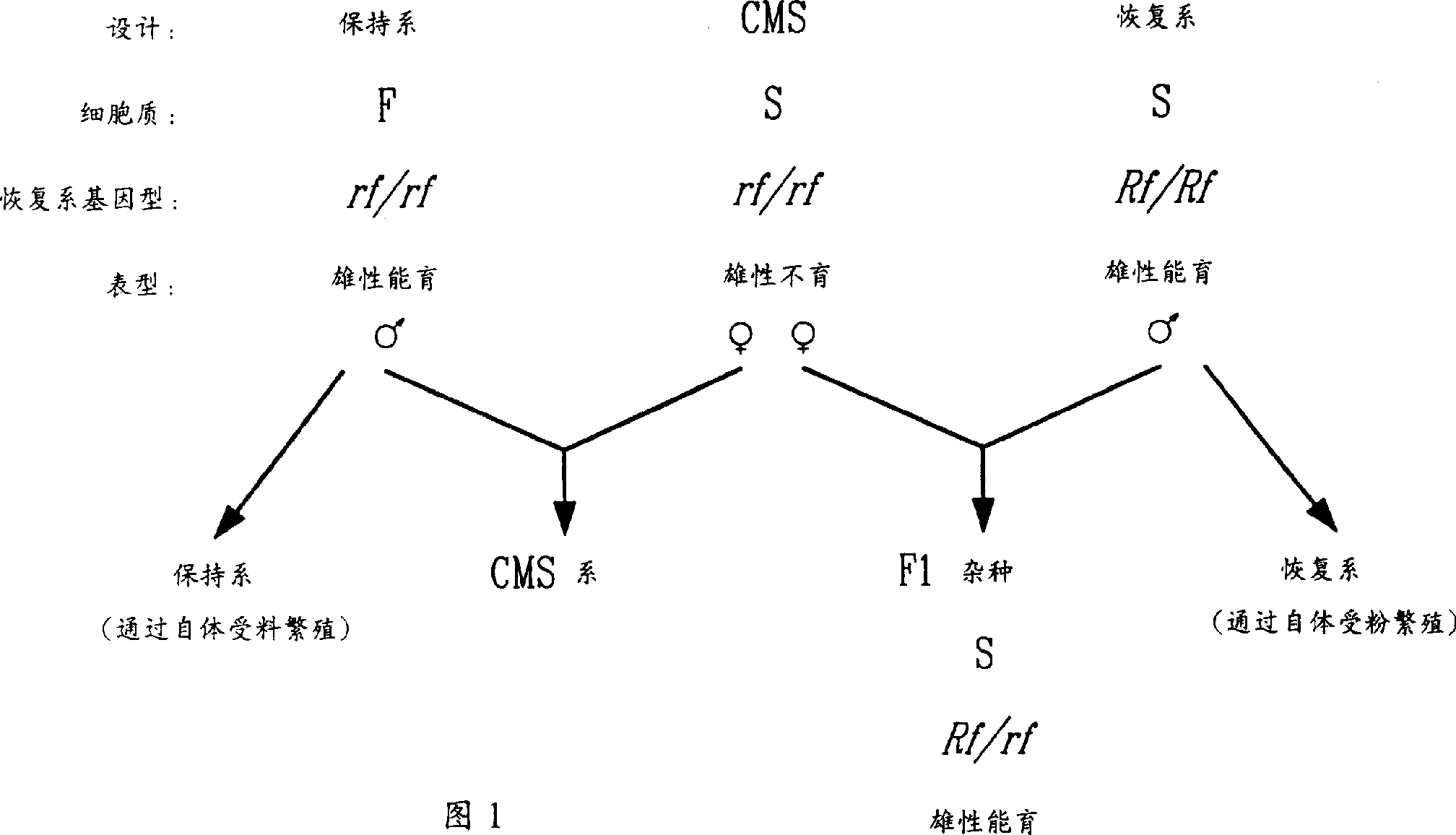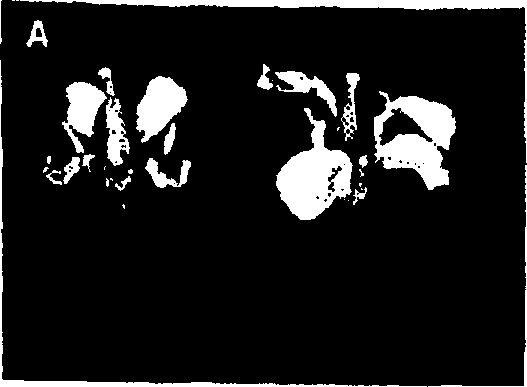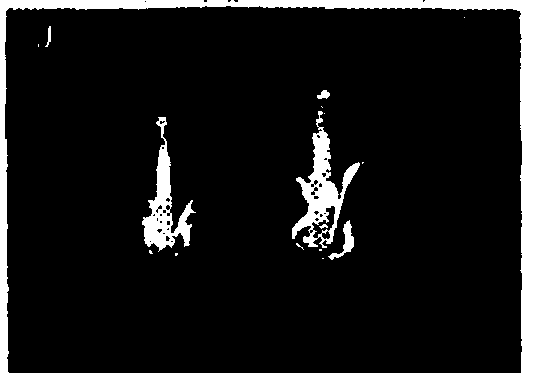Method for enhancement of naturally occurring cytoplasmic male sterility and for restoration of male fertility and uses thereof in hybrid crop prodn.
A male sterility and cytoplasmic technology, applied in biochemical equipment and methods, cells modified by introducing foreign genetic material, applications, etc., can solve the problem of reducing the total yield of "hybrid" mixtures, leakage, CMS seed contamination, etc. question
- Summary
- Abstract
- Description
- Claims
- Application Information
AI Technical Summary
Problems solved by technology
Method used
Image
Examples
Embodiment I
[0098] Use of the AP3 / A9-A6e construct as a dominant fertility restorer gene in Manqing
[0099] In this example, through gene transformation will Figure 4 The A9 / A6e construct shown is introduced into the genome of a species such as Westar, usually by (pol) cytoplasmic sterile. The gene was introduced into the pol cytoplasmic line and the resulting transgene obtained was expected to be partially male fertile. This line was self-pollinated to produce a partially male fertile restorer line homozygous for the A9 / A6e transgene. This line can then be crossed with a different pol CMS line to produce a restored fertile F1 hybrid.
Embodiment II
[0101] Use of AP3 / C4-ORF constructs to enhance pol cytoplasmic male sterility in Manqing
[0102] Induction of sterility by pol cytoplasm was incomplete for most of the Cranberry genotypes, especially at higher temperatures. In hybrid seed production operations, the production of residual pollen results in variable levels of selfing of the CMS lines. Plants grown from these seeds are not hybrids and will have a reduced ability to self-seed. Together, these factors can significantly reduce the yield of "hybrid" seed batches. In this example, using Figure 5 The indicated C4-ORF dominantly transmits the sterile property to reduce or eliminate residual pollen production in the CMS lines, thereby increasing the percentage of hybrid seed obtained and thus increasing the yield of hybrid seed batches. Enhanced Genetic Transformation The C4-ORF construct was introduced into a fully dominant fertile Westar (nap) line to generate a partially dominant fertile line containing the C4-OR...
PUM
 Login to View More
Login to View More Abstract
Description
Claims
Application Information
 Login to View More
Login to View More - R&D
- Intellectual Property
- Life Sciences
- Materials
- Tech Scout
- Unparalleled Data Quality
- Higher Quality Content
- 60% Fewer Hallucinations
Browse by: Latest US Patents, China's latest patents, Technical Efficacy Thesaurus, Application Domain, Technology Topic, Popular Technical Reports.
© 2025 PatSnap. All rights reserved.Legal|Privacy policy|Modern Slavery Act Transparency Statement|Sitemap|About US| Contact US: help@patsnap.com



